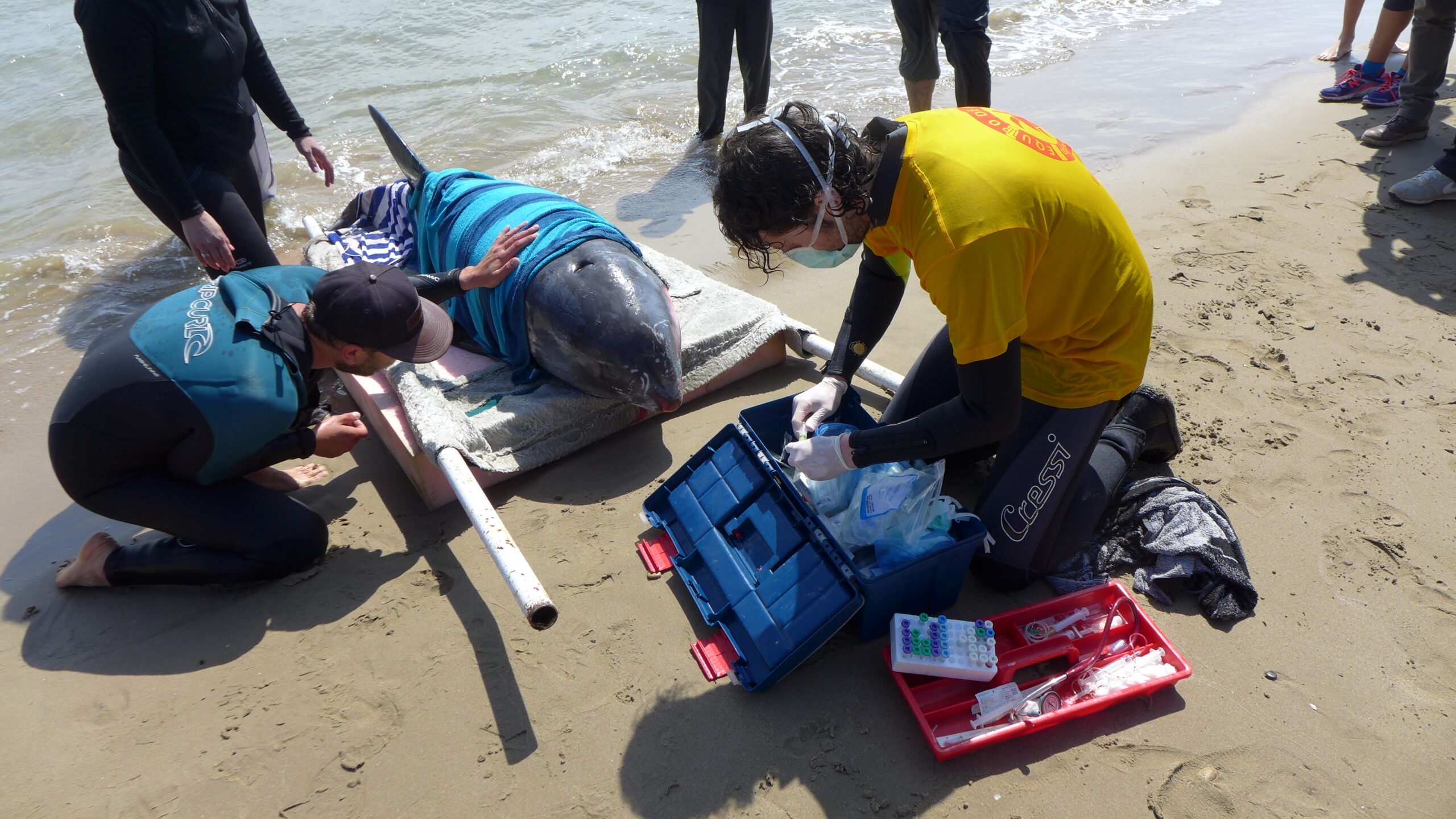Dr. Gabriella Postiglione
Ethology and animal welfare. Department of veterinary medicine. Alma Mater Studiorum, University of Bologna
At Oceanografic our team of veterinarians deliver world class care to ensure the physical well-being of our animals. They are supported by enthusiastic professional trainers who are committed to ensuring these incredible animals receive their daily meals, exercise and a variety of activities to ensure their mental and physical health.
One of the key tools the trainers use to care for the animals may surprise you, they are toys!! In fact, I think the belugas at Oceanografic have more toys than my little nephew! They have all sorts of toys, including colorful floating balls, rings with algae-like bands that move with the water flow and a huge «jellyfish». Most of these toys were created by the big imaginations of their trainers.
When the animal playing with the toys weights over 1000 Kg, it is critical to ensure the toys are durable and “beluga proof”! When visiting Oceanogrfic you can see the Belugas using their mouth and sometimes their fins to carry around the objects they play with. Play can include carrying, throwing out of the water or even tying them together. Even without hands, on occasion Yulka will bring several toys together and tie knots so tight they are very difficult for the trainers to seperate. Some toys will even have a special surprise inside as they are stuffed with food. Yulka and Kairo enjoy these types of toys and can find it challenging to remove the fish or other food items out depending on the shape of the toy.
Sometimes the Belugas even “build” their own toys…. Blowing and playing with bubbles! The meaning of this behavior is still unclear but based on our observations and those of other researchers, it is believed that there could be a connection between the different types of bubbles and the animals mood. Blowhole drips and mouth rings seems to be primarily playful. a recent study by Canisius College in New York suggested that beluga females seem more playful than males, producing bubbles more often.
When it comes to types of play, at Oceanografic Kairo appears to prefer motor play like swinging and chasing while Yulka seems to prefer to play alone with toys. Observations at other aquariums indicate that young belugas play more often than older belugas and as they grow up they have periods of development where certain forms of play are more frequent than others.
Play includes many different behaviors, and we continue to add to the list of activities that can be considered “fun” and important to the well being of Belugas in our care. Play enhances motor development, hunting skills, communication skills and many other important functions. Play has been observed in many animals, from reptiles and birds to insects and for all these animal species it seems to be an important part of their development.

